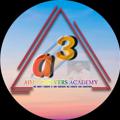Question 1 :
Find the area of a triangle formed by the points A $\left(5, 2\right)$, B $\left(4, 7\right)$ and C $\left(7, – 4\right)$.
Question 2 :
If P ($\frac {a}{3}$,4) is the mid-point of the line segment joining the points Q (– 6, 5) and R (– 2, 3), then the value of a is :
Question 3 :
<img style='object-fit:contain' src='https://teachmint.storage.googleapis.com/question_assets/cbse_ncert/61b19bd7273b230584979a29.png ' />
The Class X students of a secondary school in Krishinagar have been allotted a rectangular plot of land for their gardening activity. Sapling of Gulmohar are planted on the boundary at a distance of 1m from each other. There is a triangular grassy lawn in the plot as shown in the above image. The students are to sow seeds of flowering plants on the remaining area of the plot.What will be the area of ∆PQR if C is the Origin?
Question 4 :
Name the type of quadrilateral formed, if any, by the following points (-1,-2) , (1,0) , (-1,2) , (-3,0).
Question 5 :
Point P (0, –7) is the point of intersection of y-axis and perpendicular bisector of line segment joining the points A (–1, 0) and B (7, –6). State true or false.
Question 6 :
Find the ratio of the area of the triangle formed by joining the mid-points of the sides of the triangle whose vertices are $\left(0, –1\right)$, $\left(2, 1\right)$ and $\left(0, 3\right)$ to the area of the triangle whose vertices are $\left(0, –1\right)$, $\left(2, 1\right)$ and $\left(0, 3\right)$.
Question 7 :
Name the type of triangle formed by the points A (–5, 6), B (–4, –2) and C (7, 5).
Question 8 :
Let A $\left(4, 2\right)$ , B $\left(6, 5\right)$ and C $\left(1, 4\right)$ be the vertices of ∆ABC. The median from A meets BC at D. Find the coordinates of the point D.
Question 9 :
The centre of a circle is (2a, a – 7). Find the values of a if the circle passes through the point (11, –9) and has diameter 10$\sqrt 2$ units.
Question 10 :
Find the area of the triangle formed by joining the mid-points of the sides of the triangle whose vertices are $\left(0, –1\right)$ ,$\left(2, 1\right)$ and $\left(0, 3\right)$.
Question 11 :
The points A (2, 9), B (a, 5) and C (5, 5) are the vertices of a triangle ABC right angled at B. Find the values of a and hence the area of ∆ABC.
Question 12 :
Find the point of intersection in which the y-axis divides the line segment joining the points $\left(5, – 6\right)$ and $\left(–1, – 4\right)$.
Question 13 :
The perimeter of a triangle with vertices (0, 4), (0, 0) and (3, 0) is :
Question 14 :
Find the coordinates of the point which divides the join of $\left(–1, 7\right)$ and $\left(4, –3\right)$ in the ratio 2 : 3.
Question 15 :
The point which lies on the perpendicular bisector of the line segment joining the points A (–2, –5) and B (2, 5) is :
Question 16 :
If P (9a – 2, –b) divides line segment joining A (3a + 1, –3) and B (8a, 5) in the ratio 3 : 1, find the value of b.
Question 17 :
Find the distance between the points $\left(0, 0\right)$ and $\left(36, 15\right)$.
Question 18 :
If (a, b) is the mid-point of the line segment joining the points A (10, –6) and B (k, 4) and a – 2b = 18, find the value of k.
Question 19 :
A line intersects the y-axis and x-axis at the points P and Q, respectively. If (2, –5) is the mid-point of PQ, then the coordinates of P and Q are, respectively :
Question 20 :
The point which divides the line segment joining the points (7, –6) and (3, 4) in ratio 1 : 2 internally lies in the :
Question 21 :
Name the type of quadrilateral formed, if any, by the following points (4,5) , (7,6) , (4,3) , (1,2).
Question 22 :
Find the distance between the points (0, 0) and (36, 15).
Question 23 :
AOBC is a rectangle whose three vertices are vertices A (0, 3), O (0, 0) and B (5, 0). The length of its diagonal is :
Question 24 :
If A $\left(x_1, y_1\right)$, B $\left(x_2, y_2\right)$ and C $\left(x_3,y_3\right)$ are the vertices of ∆ABC, find the coordinates of the centroid of the triangle.
Question 25 :
Find the distance between the following pair of points: (a,b) , (-a,-b).
























